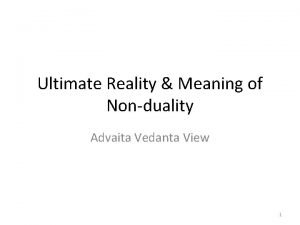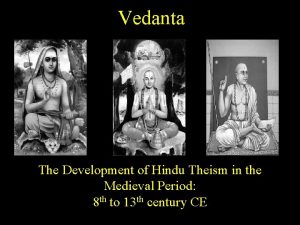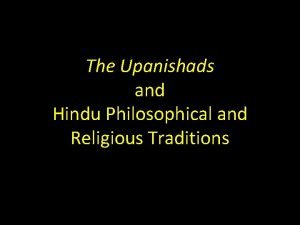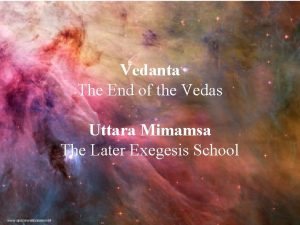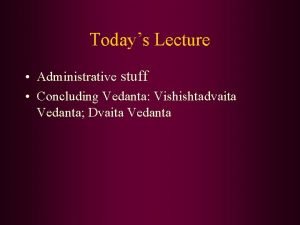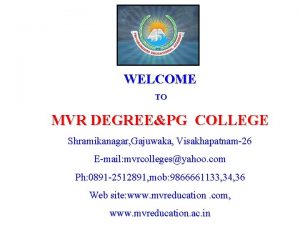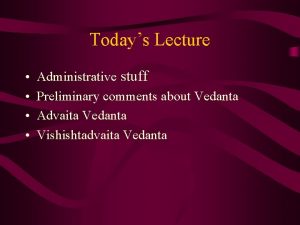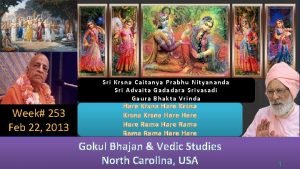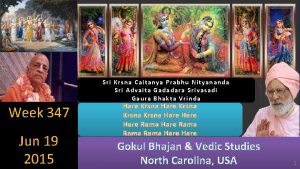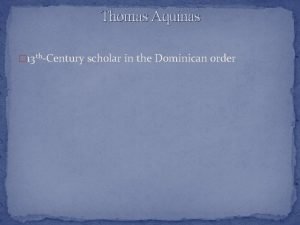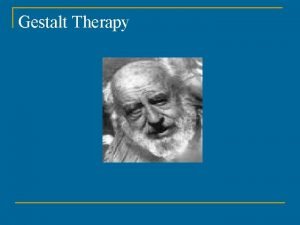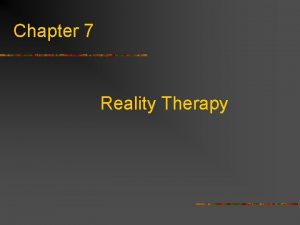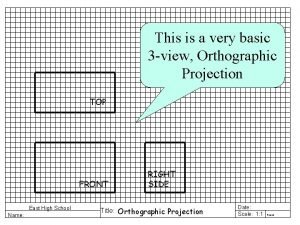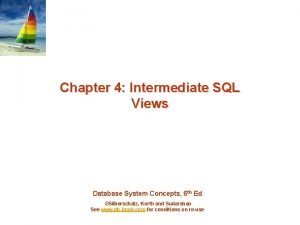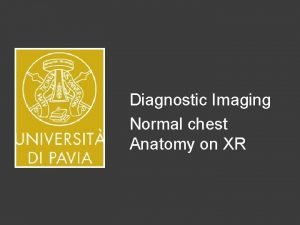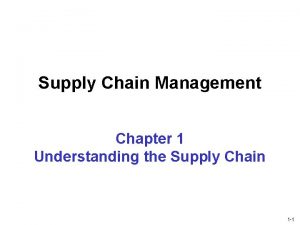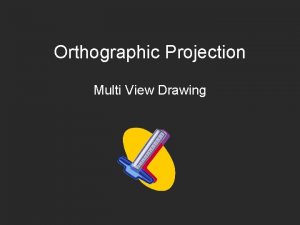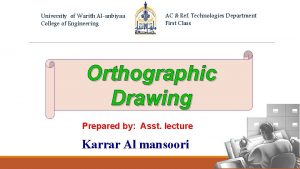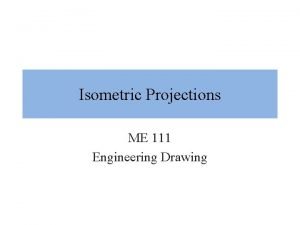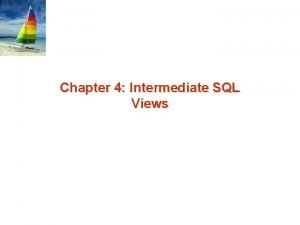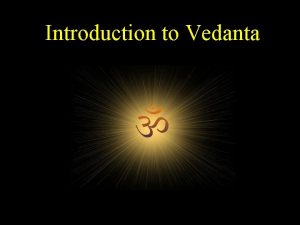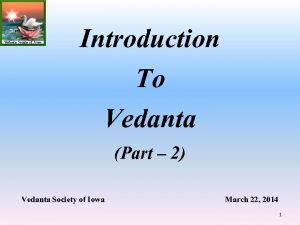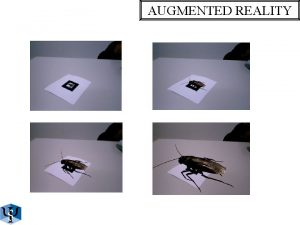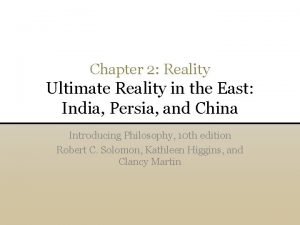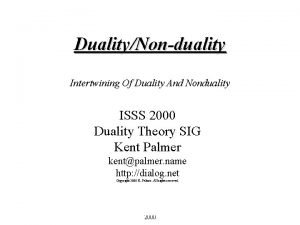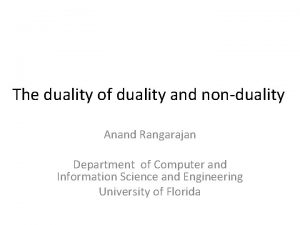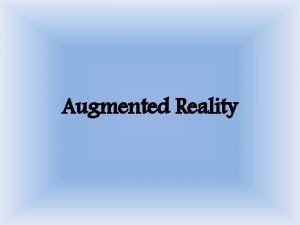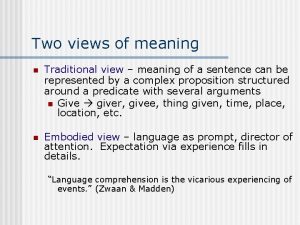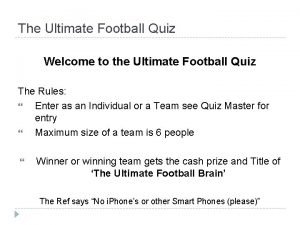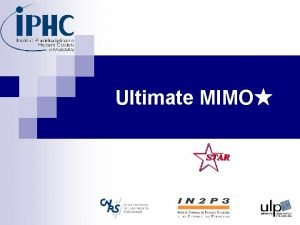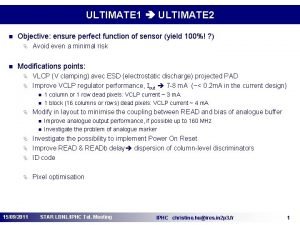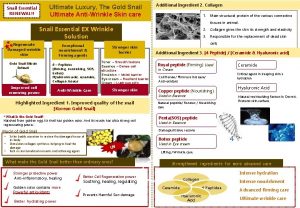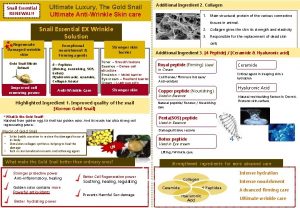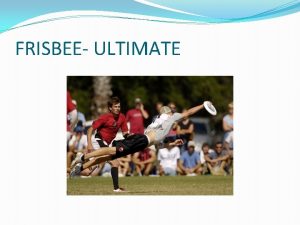Ultimate Reality Meaning of Nonduality Advaita Vedanta View
































- Slides: 32

Ultimate Reality & Meaning of Non-duality Advaita Vedanta View 1

Acknowledgement • My background • SHEN’s contribution 2

Introduction • Parlance Reality • Ultimate Reality per Advaita Vedanta 3

Brahman • Ultimate reality in Vedanta is named Brahman • Levels of Reality – Paramarathic or Ultimate Reality – Vyavaharic or Transactional reality – Pratibhasic or Dream Reality 4

Brahman –Ultimate Reality • Names & Attributes • Various names dependent upon the context – Atma, Self, Turiya, Akshara, Om etc. • Various Attributes – – – – Not perceivable by sense organs. Incomprehensible by mind Unrelated to anything Not accessible Not graspable Not expressible Not subject to transaction Transcendental and immanent 5

Brahman - Definitions • Two definitons: – (satyam-Jnanam-Anantam) -Existence- knowledge - infinite consciousness – (Sat-Chit-Ananda )-Existence- Consciousness-Bliss 6

Existence (Sat or satyam) • In the beginning this universe was Existence or Sat: alone, only without a second • Existence experienced by ‘isness’, ‘amness’ or ‘areness’; (he, she, it is; I am, you are) • Self is common to you, he or I • Self does not change during various stages of life 7

Consciousness (chit) • Like Existence Consciousness pervades all sentient and insentient beings • This all pervasive Consciousness is pure consciousness or OC • Sentient beings have a reflecting medium (intellect or Buddhi). • OC gets reflected in this medium as reflected consciousness (RC) and creates awareness which is unique to each individual • Inert objects do not have awareness as they do not have a reflecting medium • Five sense organs body enable awareness in their respective fields. 8

Nature of Sat & Chit • They are not part, product or property of the body • They are independent entities and are not affected by the conditions of the body • They are not limited by the boundaries of the body and extend beyond it • They survive and continue to exist after the death of the body • Medium of the body is essential for their manifestation. 9

Ananda or Bliss • Third intrinsic feature of Brahman is Bliss • It is the infinitude or absence of ‘want’ • Realization of the absence of limitation creates all pervasiveness • Self love is the only real love; Love for others is conditional 10

Indirect definition of Brahman • Brahman is the material and intelligent cause of creation of the universe. • Brahman creates Jiva at the micro level and the world at the macro level) 11

Steps for comprehension • Sravannam – Listening and studying • Manannam - questioning • Niddidhyasanam – practicing and assimilation 12

Man-World-god (Jiva-jagat-Iswara) • Study of the triad required to understand human being’s (Jiva’s) place in the universe • Main focus is the study of the jiva 13

Jiva (Human being) • Human goals • Moslow’s hierarchy of needs • Vedanta’s summation of human goals – Artha – Security – Kama – Enjoyment – Dharma – ethical living – Moksha – Freedom from ignorance of real nature 14

Jiva-Jagat (Man-world) • Human circumstances – fortunate and unfortunate • Need for self confidence. • Outside help results in lectures on our deficiencies • Disappointment with the world pushes one to seek help from God • Feeling of God’s presence and not the actual help creates a sense of security. 15

Jiva’s Personality • Amalgam of three bodies – Gross body – Subtle body – Causal body 16

Gross Body • Made up of gross matter • Gross matter made of five gross elements; space, air, fire, water and earth. • Composition known through anatomy • Residence of the Self or Atma • All karmas performed resulting in merit or demerit (punyam and papam) • Changes from birth to death 17

Subtle body • • Made up of five subtle elements Comprises 19 components Five sense organs, Five organs of action, Five pranas or life forces; Four internal organs (anthakarnam); This body also undergoes change Believed to pass on to the next gross body after death 18

Causal body • Made up of causal matter as impressions (vasanas) • It is invisible and is unmanifest • Its components are gross and subtle bodies before they were created • It is like butter in milk 19

Nature of the bodies All three bodies are by themselves inert Become sentient by the presence of consciousness Consciousness enters the intellect and gets reflected Reflected consciousness associated with the reflecting medium (intellect) is RC or ahamkara (ego) • Use of ‘I’ in our transactional plane is ego. In reality ‘I’ when dissociated from the reflecting medium is our real Self • Feelings of ‘I’ and mine represented by the words is the cause of the misconception • The misconception leads to the impression that my body, mind or my other biographical data is me • • 20

Three states • Jiva experiences the world in three states – Waking state – Dream state – Sleeping state. • My real Self is neither of these • Real Self pervades all three states • Self that pervades the three states is called the fourth or ‘Turiya’ 21

World-God (Jagat-Iswara) Creation • Vedanta views creation as the cyclic manifestation • Creation involves, manifestation, sustenance and dissolution as an endless cycle • Prakritti is the basic or seed form of matter • Prakritti is more subtle than energy • Prakritti is an integral part of Brahman and is the inherent power (Sakti)of Brahman 22

Prakritti • • Prakritti has three characteristics (gunas) These are satwa (pure), rajas (active) and tamas (inert) The three gunas are mutually coupled They are present in everything in the universe in varying proportions. Prakritti can be divided in three categories based on the preponderance of a particular guna Satwa dominated prakritti is called maya Rajas dominated prakritti is called avidya (ignorance) Tamas dominated prakritti is called prakritti 23

Prakritti & Creation • When Brahman (OC) is reflected into maya, it becomes Iswara or God at the macro level • When Brahman is reflected in the avidya at the micro level it becomes Jiva • Iswara or God maintains control of maya but Jiva struggles under the control of avidya • Tamas dominated prakritti is the cause of the tangible universe. 24

Creation of tangible universe • Tamas dominated prakritti produces the five basic elements • Creation of elements starts with the subtlest – space (akasa) followed in sequence with air, fire, water and earth. • The elements are in subtle form and each of them has the three gunas • Satwa part of these elements produce the anthakarna (inner organs) and the organs of knowledge • Rajas part of the five elements produce the organs of action and the five life forces (pranas) • Tamas part of the elements produce the gross element through a grossification process which produce the gross body and all the gross objects. 25

Two types of creations • Iswara (God) creates the world impelled by the totality of karmas of the universe • In fact the world was always existent in dormant form • Creation is the unfoldment of the universe by giving names and forms • Iswara unfolded the universe for the experience of the many jivas. Iswara has no use of the objects for Himself. He just enjoys the drama • Jiva creates his own universe by his own mental actions. The objective world is not jiva`s problem • Two types of duality; first is due to iswara`s creation and the second is due to jiva`s own creation • By his mental actions jiva creates his karmas 26

Iswara or God • We often question existence of God e. g mother Terresa or St John the Cross • We start our spiritual search for a God that has a name, a form and variety of attributes. • Initially we believe that one form (Eka rupa)of god created the world sitting somewhere like a carpenter. We believe there is only one God • With more maturity, we begin to believe that God Himself has become the world in many forms (aneka rupa) and that there is only God • The third stage is when God appears as the universe and does not undergo any change (arupa iswara) • Third stage is a culmination of the understanding of non-duality • First two stages makes us get confidence by the thought of help from God who is there. Third stage makes us self-dependent 27

Oneness of Atma and Brahman • Four aphorisms from Vedanta – Consciousness is Brahman (pragnanam Brahma). This is a statement of definition – That Thou Art (Tat Twam Asi). Statement of advice – This Self is Brahman (Ayam Atma Brahma). This is a statement of practice – I am Brahman (Aham Brahman Asmi). This is a statement of experience 28

Non-Duality • Advaita Vedanta philosophy – Brahma satyam, Jagat mithya (Brahman is Real, the world is mithya) – Brahman is the only reality (Ultimate Reality) – World is neither real nor unreal nor both. It is uncategorizable (mithya) 29

Transcendence to Ultimate Reality • Despite definitions or attributes, Vedanta does not point to Brahman • You drop definitions or attributes by ‘neti, neti’ (not this, not this) • While in transactional plane you can describe Brahman by remaining silent. Like Buddha did when asked about God. 30

Jnani- Liberated person • Self Knowledge makes him natural and spontaneous • From the mind point of view he has equanimity • Equanimity known by FIR (frequency, intensity and recovery period of disturbances) • No or reduced ahmakara and mamakara (I and mine) 31

Conclusion • Human search for meaning is to be happy • Outside sources do not lead to happiness • Vedanta teaches one to find one’s real nature as well the nature of the universe. • Both are the same sat-chit-ananda, which is the non-dual ultimate reality • Assimilation of this knowledge requires repeated and continued practice. 32
 Advaita vedanta
Advaita vedanta Advaita vedanta
Advaita vedanta Adwaita wedanta artinya
Adwaita wedanta artinya Vedanta uttara mimamsa
Vedanta uttara mimamsa Dvaita advaita vishishtadvaita
Dvaita advaita vishishtadvaita Vedanta iowa
Vedanta iowa Vedanta svitavy
Vedanta svitavy Dvaita advaita vishishtadvaita
Dvaita advaita vishishtadvaita Pakshigan meaning
Pakshigan meaning Gaura-bhakta-vrinda meaning
Gaura-bhakta-vrinda meaning In aquinas view man's ultimate happiness consists in
In aquinas view man's ultimate happiness consists in Example of reality therapy
Example of reality therapy Reality therapy view of human nature
Reality therapy view of human nature This orthographic view is directly above the front view
This orthographic view is directly above the front view Purpose of sectional view
Purpose of sectional view What is a removed section view
What is a removed section view Sectional view examples
Sectional view examples Bird's eye view vs worm's eye view
Bird's eye view vs worm's eye view What is end view in engineering drawing
What is end view in engineering drawing Isometric to orthographic
Isometric to orthographic For the view create view instructor_info as
For the view create view instructor_info as Simple view and complex view
Simple view and complex view Simple view and complex view
Simple view and complex view Simple view and complex view
Simple view and complex view Mvc partial view controller
Mvc partial view controller Chest x-ray anatomy
Chest x-ray anatomy Push pull view of supply chain
Push pull view of supply chain Introduction of operating system
Introduction of operating system Objective of ethics
Objective of ethics Multi-view drawings
Multi-view drawings Front view top view
Front view top view Isometric view cylinder
Isometric view cylinder For the view create view instructor_info as
For the view create view instructor_info as
